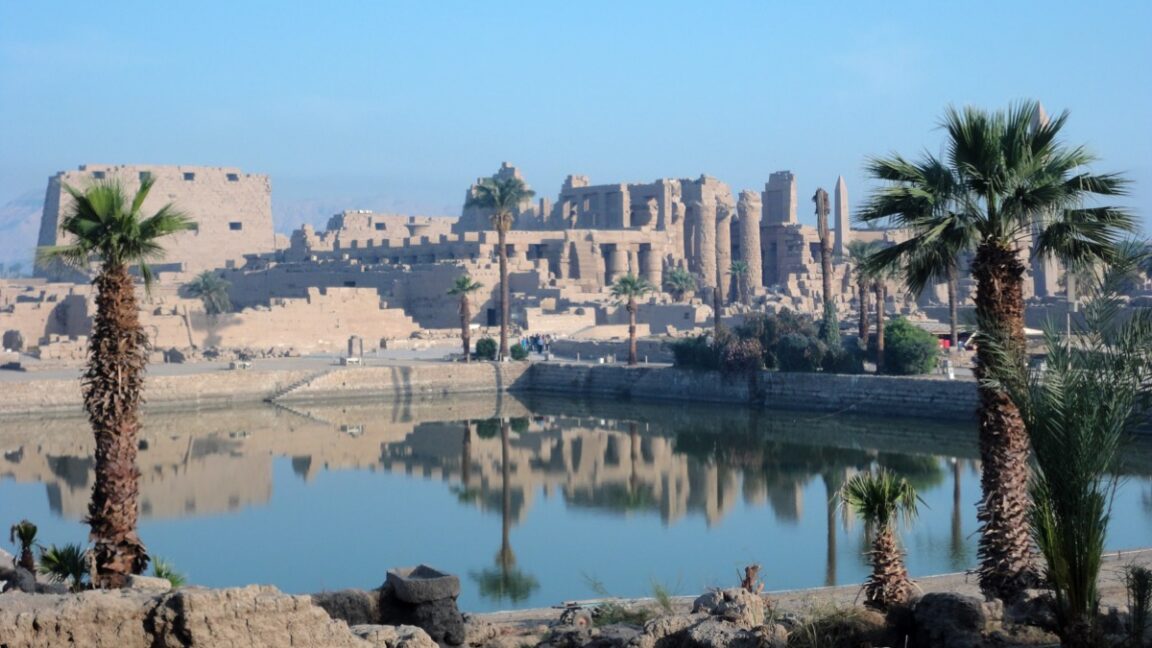Science
Discoveries from October: Spaghetti, Snakes, and Martian Mysteries

Scientific research often uncovers fascinating stories that can easily slip under the radar. October has proven to be no exception, offering intriguing insights into various fields, from culinary science to astronomy. This month’s roundup includes groundbreaking studies on gluten-free spaghetti, the behavior of snakes during strikes, the formation of gullies on Mars, and the ancient origins of Egypt’s Karnak Temple.
Unveiling the Secrets of Spaghetti
A recent study published in the journal Food Hydrocolloids highlights the microstructural differences between regular and gluten-free spaghetti. Researchers delved into the properties of these pasta types, discovering that regular spaghetti, made from semolina flour, has a gluten matrix that reinforces its structure. This matrix provides better resistance to degradation during cooking.
The research team employed small-angle x-ray scattering and neutron scattering techniques to analyze how varying salt concentrations affect gluten-free pasta. Their findings suggest that improving the matrix of gluten-free options could enhance taste and texture, offering a more satisfying alternative for those with gluten intolerance.
Insights into Snake Strikes
An investigation by researchers at Monash University examined the striking behavior of 36 different snake species, capturing their rapid strikes in high definition. The study, published in the Journal of Experimental Biology, showcases the speed at which snakes can strike—some in as little as 60 microseconds.
Using a cylindrical piece of warm medical gel to simulate prey, researchers recorded over 100 individual strikes at a remarkable 1,000 frames per second. Notably, the blunt-nosed viper exhibited the fastest strike, reaching speeds of up to 710 m/s². The results provide valuable insight into the diverse biting styles of snakes and their evolutionary adaptations.
Martian Gullies: New Evidence
The enigmatic gullies on Mars have puzzled scientists for years, and new research published in Geophysical Research Letters may offer clarity. A study led by earth scientist Lonneke Roelofs from Utrecht University supports the hypothesis that these gullies form due to seasonal deposition and sublimation of CO2 ice.
Roelofs conducted experiments simulating Martian conditions, demonstrating how blocks of CO2 ice can create gullies when released from a slope. This evidence aligns with the theory that the red planet may have hosted liquid water in its past, suggesting a more complex geological history.
Exploring the Origins of Karnak Temple
Archaeological research into Egypt’s Karnak Temple complex has shed light on its historical significance. A comprehensive geological survey, detailed in the journal Antiquity, traces the temple’s origins back to around 2520 BCE.
The study involved analyzing sediment cores and ceramic fragments, revealing that the site was likely established after regular flooding from the Nile created a suitable foundation. Co-author and geoarchaeologist Ben Pennington from the University of Southampton noted that the chosen location may have been symbolic, representing the emergence of high ground from the surrounding waters, as depicted in ancient Egyptian creation myths.
Machine Learning and Ancient Art
In a novel approach, digital archaeologist Andrea Jalandoni from Griffith University explored the potential of machine learning to identify ancient artists through finger flutings—prehistoric art forms found in caves. Her study, published in Scientific Reports, involved volunteers creating finger flutings in both virtual reality and real clay environments.
While the results varied, the clay-based images achieved close to 84 percent accuracy in classifying whether the markings were made by men or women. Jalandoni emphasized the importance of this research, highlighting its implications for cultural access and understanding of prehistoric communities.
As October concludes, these scientific explorations remind us of the ongoing quest for knowledge across disciplines. Each study not only adds to our understanding of the world but also connects us to history, nature, and even our culinary traditions.
-

 Science3 months ago
Science3 months agoToyoake City Proposes Daily Two-Hour Smartphone Use Limit
-

 Health4 months ago
Health4 months agoB.C. Review Reveals Urgent Need for Rare-Disease Drug Reforms
-

 Top Stories4 months ago
Top Stories4 months agoPedestrian Fatally Injured in Esquimalt Collision on August 14
-

 Technology3 months ago
Technology3 months agoDark Adventure Game “Bye Sweet Carole” Set for October Release
-

 World3 months ago
World3 months agoJimmy Lai’s Defense Challenges Charges Under National Security Law
-

 Lifestyle3 months ago
Lifestyle3 months agoVictoria’s Pop-Up Shop Shines Light on B.C.’s Wolf Cull
-

 Technology3 months ago
Technology3 months agoKonami Revives Iconic Metal Gear Solid Delta Ahead of Release
-

 Technology3 months ago
Technology3 months agoApple Expands Self-Service Repair Program to Canada
-

 Technology3 months ago
Technology3 months agoSnapmaker U1 Color 3D Printer Redefines Speed and Sustainability
-

 Technology3 months ago
Technology3 months agoAION Folding Knife: Redefining EDC Design with Premium Materials
-

 Technology3 months ago
Technology3 months agoSolve Today’s Wordle Challenge: Hints and Answer for August 19
-

 Business3 months ago
Business3 months agoGordon Murray Automotive Unveils S1 LM and Le Mans GTR at Monterey









